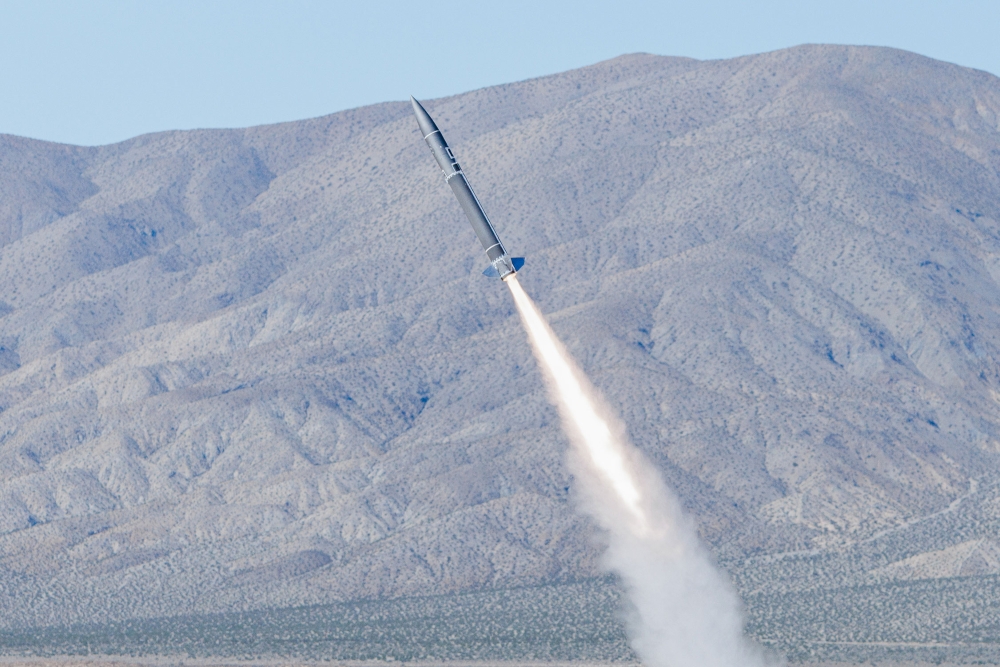
Castelion announced that it has been awarded contracts by both US Army and US Navy to integrate its "affordable" hypersonic missile, BLACKBEARD, onto undisclosed “operational platforms." The contracts will see a full integration, culminating in live-fire tests.
This is a remarkable success in itself for a startup founded in 2022 and that started out big with a hypersonic missile, which, in the words of the US Army, represents a solution that offers "approximately 80% of the performance of the future Precision Strike Missile (PrSM) Increment 4" but at a "significantly" lower cost.
According to US Army plans, BLACKBEARD is intended to become part of the "MLRS family of munitions" (MFOM) and thus be integrated onto HIMARS (and, we must deduce, also onto the M270 despite it not being directly mentioned) and the new Common Autonomous Multi-Domain Launcher (CAML), the development of which is funded in the Army's FY 2026 budget. The CAML, which we reported on more fully in a specific article in the past, is a new family of unmanned, automated launch vehicles (Medium and Heavy). The CAML-H will be able to employ TOMAHAWK missiles and also Patriot PAC-3 interceptors, replacing even the current container-launcher of the Medium-Range TYPHON batteries. The CAML-M is looking to integrate the GMRLS family, PrSM, BLACKBEARD, and air-to-air interceptors from the AIM-9X upwards.
The US Army's FY 2026 budget includes a demonstration launch of BLACKBEARD GL (Ground Launch) from a GMLRS pod. The first test launch is expected to quickly lead, according to plans by the end of the 2026 fiscal year, to the delivery of some ten missiles and launch from HIMARS as a "Minimal Viable Capability," with the delivery of the "mature" product starting in 2028. Castellion released photos of the latest 2 development launches at the beginning of October. One of the released images is used to illustrate this article.
While the US Army specifically mentions a ground-launched variant and gives us a clear indication of the platforms from which it intends to launch it, we know very little about the US Navy's plans. An air launched version of BLACKBEARD already exists, and back in 2024 the US Navy had awarded Castellion a study contract regarding the feasibility of developing an air-to-surface hypersonic weapon with a maximum length of 5.4 meters (212 inches) and a maximum launch weight of approximately 1250 kg (2,750 pounds). The same contract also requested a smaller air-to-air weapon, approximately 3.65 meters long and about 18 cm (7 inch) diameter: basically, a weapon compatible with the dimensions of the AMRAAM.
It’s fair to assume the US Navy’s primary interest might be focused on the air-launched strike variant, since there’s a well-known requirement to deploy hypersonic strike capabilities quickly. The answer was supposed to be the Hypersonic Air-Launched Offensive Anti-Surface Warfare (HALO) project, but this was terminated in 2024 due to cost concerns.
However, we cannot rule out the possibility that the US Navy might already be looking at launching from ships, or (more difficult) from submarines. At the moment, we know little about BLACKBEARD itself: it's a guided weapon equipped with a seeker, but we don't have solid information about its nature. It's also not certain whether BLACKBEARD is a "true" hypersonic, with gliding/maneuvering capability, or a purely ballistic weapon.
For PrSM Increment 4, the stated objective is a near air-breathing weapon with an advanced RamJet engine, a range exceeding 1000 km, and improved manoeuvrability. As mentioned, the US Army views BLACKBEARD as an "80% solution" compared to what is required for the PrSM Increment 4: this gives us a ballpark idea of what Castellion’s product is meant to do.








.png)
